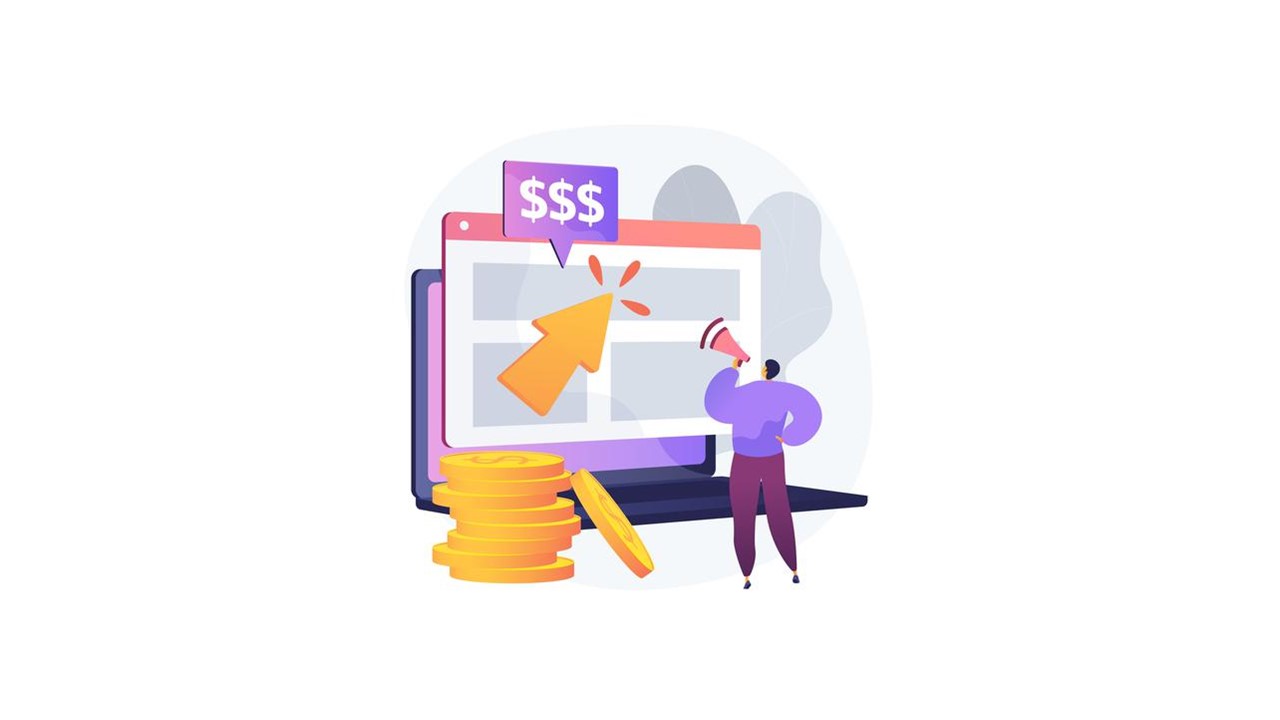How does Google Ads Bidding work?
Depending on your business goals, Google offers a variety of ways to bid for your ads. Every time Google has ad space available on a website or in a search result, it holds an auction. The auction then determines the advertisements will appear in that space at that particular time.
The result of this auction is based on your bid and hence, having a robust bidding strategy can prove to be a winner for you. It’s important to choose the right Google Ads bidding style and execute a robust plan for changing bids if you want to lower your ad costs. In the absence of a strategy, you’ll be clueless about how you squandered your whole budget on just a few clicks. However, with the correct strategic decisions, you’ll be able to unleash your campaign’s success to new heights.
Before diving into the bidding strategies, let’s take a quick look at some of the factors that affect how ranking takes place on google ads.

What are the components of Google Ads Auction Rankings?
When it comes to determining how your ad should rate in Google Ads auctions, there are three major factors to consider:
1) The keyword’s maximum bid for cost-per-click
2) The ad’s your quality score on that specific keyword
3) Relevance of your ad to the keyword
What is manual bidding?
In Manual bidding, you set your maximum cost-per-click (CPC) for each of your keywords. The primary benefit of manual bidding is that you can set the maximum amount for each click on your ad and exercise the most specified control on multiple keywords present in your campaign.
It is a time-consuming process and can be difficult for beginners who are just starting with Google Ads. Still, manual bidding has its benefits as you can also factor in media attention, climate changes, or changing industry conditions into your bids that automated bidding cannot do.
What is Google Ads automated bidding?
Google’s Automated bidding is a bid technique that aims to optimize outcomes based on your campaign objectives. Google uses automated bidding to set bid amounts based on the probability of your ad resulting in a click or conversion by analyzing factors such as user’s search intent, demographics, location, etc.
With automated bids, you don’t need to edit bids for keywords or ad groups manually. The bids are generated automatically and specifically for each auction. Portfolio bid strategies are used in all of Google’s automated bid strategies.
What are the different types of bidding strategies available for Google ads?
For most businesses, the first question is whether to opt for automated or manual. Usually, people choose automated, but even that requires a significant amount of analysis to match your organizational goals and time and place contingencies.
Here, we discuss the following bidding strategies for google ads:
- Maximize Clicks
- Target CPA
- Enhanced CPC
- Target return on ad spend (ROAS)
- Maximize Conversions
- Maximize Conversion Value
- Target Impression Share
- Manual CPC

- Maximize Clicks
This automated bidding technique uses your regular budget as a starting point. It is specifically recommended for businesses having a limited budget allotted for limited search volume for keywords in their campaign.
- Target CPA
Target CPA strategy, also recognized as conversion optimizer, is an automated bidding strategy that allows Google to change bids to average a fixed cost per conversion target.
To implement target CPA bidding, you are required to fulfil the criteria of having a conversion volume of at least 15 over 30 days. This strategy helps when keyword intent is clear and straightforward that can lead directly to conversion.
- Enhanced CPC
Enhanced CPC allows Google to increase or decrease your bids by 30% by predicting which searchers are more likely to convert and which are not. When a conversion seems possible, Google will raise your maximum CPC bid by up to 30%. For conversions that aren’t effective, it has the opposite effect. Enhanced CPC is an optional feature available when you choose Manual CPC bidding or a portfolio bid strategy
- Target return on ad spend (ROAS)
Target return on ad spend (ROAS) is an automated bidding strategy that considers the percentage of sales per dollar spent on the ads. So, if you seek a 3-times ROI, Google will consider that you require ₹3 for every ₹1 spent. This strategy works best for e-commerce sites but requires users to put the necessary keywords to drive a high return on ad spend.
- Maximize Conversions
Maximizing conversion is an automated bidding strategy that allows you to set a minimum daily budget and lets Google decide what will get the most conversion value. This is not a portfolio bid strategy and is best used when you are committed to receiving a higher volume of conversions.
- Maximize Conversion Value
Maximum conversion value is a newer bidding strategy and works similar to target ROAS by maximizing return on ad spend. You do not have a specific return on investment, but you let the algorithm decide the ad spend.
- Target Impression Share
Focussed on brand awareness, this strategy helps you achieve your Impression Share target. The percentage of impression share is affected by your bids and the quality score of Google ad. This option also provides you with the maximum CPC as a cap. However, setting it low could risk limiting your bids.
- Manual CPC
With manual CPC, you can exercise greater control over your bids, including tracking the reports and making changes basis the performance. With manual CPC, You can quickly determine which search words are more profitable than others and bid higher on your winning products. However, a big disadvantage is that you cannot utilize Google’s algorithms, and wrong judgment might lead to lesser results.
Bidding Strategy | Goal | Pros | Cons | Used when |
Maximize clicks | Increase site visits | Straightforward and effective for traffic generation | This can lead to lower-quality clicks resulting into lower conversions | You have a solid sales funnel and can convert visitors to customers |
Target Cost-per-acquisition (CPA) | Get more conversions | Avoids unprofitable clicks and receives conversions for a lower cost | Requires a significant budget yo meet the CPA goal | You have your cost benefit analysis in place to establish CPA |
Enhanced cost-per-click (ECPC) | Increase Click-through rate and Conversion rate | Reaches a greater audience | Lack of bid caps can result in spending more than you accounted for. | Want to opt for a hybrid strategy by availing automated benefits while having a manual bidding control |
Target return on ad spend (ROAS) | Meet a target return on ad spend (ROAS) | Helps in placing your ad against relevant audience who are willing to purchase | Requires a targeted approach when it comes to keywords | focused on driving the highest value of conversions rather than number of conversions |
Maximize conversions | Receive more conversions | More value received against your budget | Requires spending more money to drive conversions | have a large budget |
Target Impression Share | Brand Awareness | Useful for brands that want to dominate on specific keywords | Not very optimum for conversions. | When you have targeted and limited keywords |
Manual CPC | Maximizing Clicks | You can control your bids | Requires time, effort and expertise | If you have a dedicated team to manage the bidding process. |
What are some best practices to choose a bidding strategy?
- You must ensure that you are clear on your business goal before posting a campaign.
- Next, based on the goal you want to achieve, determine the budget, volume, and the time-frame for the campaign.
- Ensure that you test different bidding strategies over some time and track the performance of each of them.
- Continually analyze performance indicators such as conversion value, conversion rate, etc. Once you start observing some trends, you’ll be in a better place to decide where to put your bids.
- Experiment, but don’t keep changing strategies. Rather, continue the one with the best results and develop more ways to optimize your ads.
- You can also try portfolio bid strategy to provide you insights from all the campaigns to lead you to a faster rate of optimization.
Bidding forms a crucial part of your search engine marketing efforts as you seek results from every dollar spend in search ads. With a robust bidding strategy, you’ll ensure that your ad is displayed for targeted and specific keywords to relevant users who can be easily converted to customers.
All the best for your bid!

